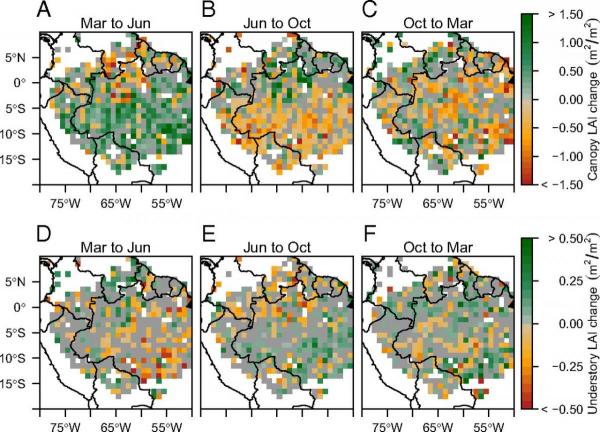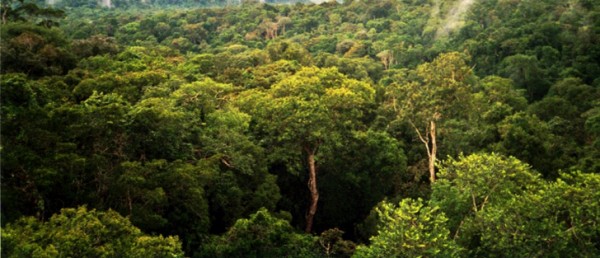UMD Researchers Use Space Laser Technology to Explain Dry Season Growth in Amazon Rainforest
COLLEGE PARK, Md.—For more than a decade, scientists have debated what’s known as the “green up” phenomenon in the Amazon rainforest—when vegetation appears to thrive and grow fuller during the dry season with little or no rainfall. While some researchers have supported hypotheses that drought-induced growth does occur in the Amazon, others have argued it is more likely an optical illusion created by shadows cast from satellite positioning.
New research from the University of Maryland Department of Geographical Sciences published in the Proceedings of the National Academies of Sciences (PNAS) utilizes lidar satellite technology to more accurately measure seasonal changes in leaf area within the Amazon. Research Associate Hao Tang and Professor Ralph Dubayah analyzed data sets collected from NASA’s Geoscience Laser Altimeter System (GLAS) and found strong evidence of green up during the dry season in both the tree canopy and the underbrush; just not at the same time.
“Trees in the Amazon forests not only respond to seasonal environmental changes, but also have active ecological interactions as a community,” Tang said. “Tall trees grow leaves at the early dry season when both water and light are abundant; they then drop leaves during the mid-to-late dry season, not only protecting themselves from drought but also helping understory and small trees grow.”

“This pattern is easily missed if you average over the entire Amazon basin because it progresses, almost like a wave, from south to north, with the dry season,” Dubayah added. “There is a plausible, ecological explanation for this: Light is driving the growth of the canopy in the early dry season and light from small gaps in the canopy that form later in the dry season drive the growth of the small shrubs and trees near the forest floor.”
The UMD researchers stress the need for better lidar observations of the Amazon’s canopy structure from space in order to more fully understand how rainforests respond to environmental and climate changes. Dubayah leads UMD’s Global Ecosystem Dynamics Investigation (GEDI), a NASA-funded mission to place a multi-beam laser instrument on the International Space Station in late 2018.
“The GEDI mission is optimized precisely to make these kinds of difficult measurements possible. It will provide more than 15 billion cloud-free observations during its 18-month mission and should greatly enhance our ability to understand canopy dynamics in the Amazon and elsewhere,” Dubayah said.
Published on Thu, 02/23/2017 - 09:40


